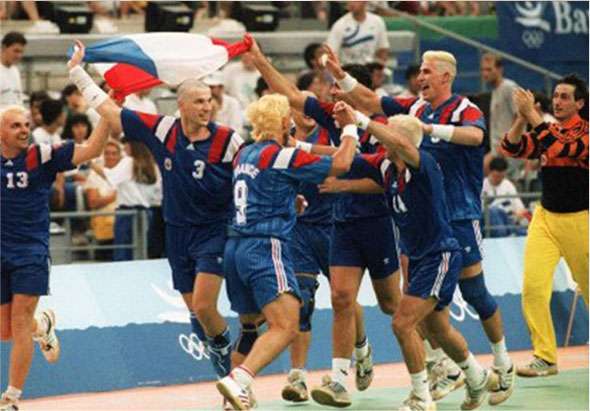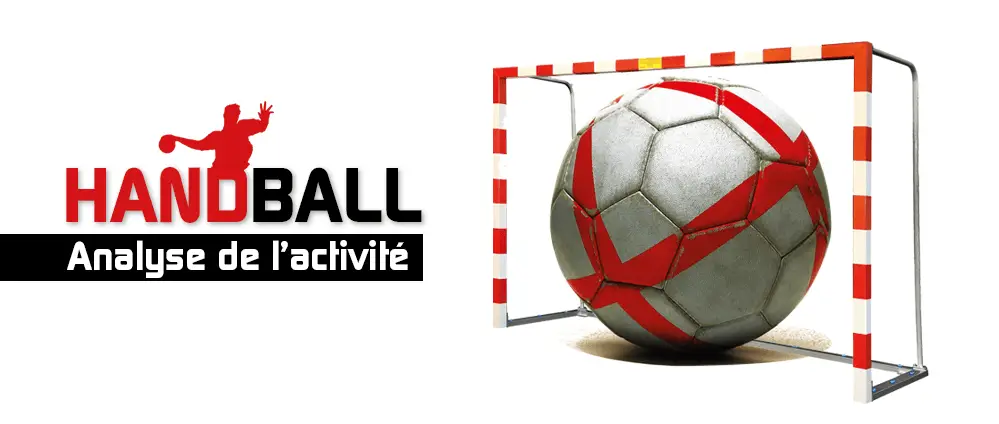At the turn of the century, modern handball was introduced to Denmark, Germany and Sweden. It was at this time that the eleventh handball appeared, inspired by the games “Raffball” and “Königsbergerball” created by Kondrad Koch (1846-1911).
Where was handball played in the beginning?
Image credit © unsplash.com
Handball is a sport that began in Czechoslovakia after the end of the First World War. However, it was in Denmark that the first rules of modern handball were created by Holger Nielsen in 1898.
The origin of the game also dates back to an ancient game called “hazena”, played in Czechoslovakia, as well as “Torball” (a ball at the goal), which was a sporting activity offered to the Germans. In the 1900s, Casey, an Irishman, introduced a game similar to handball to the United States.
The first games similar to modern handball therefore have their roots in Czechoslovakia and Denmark. German Carl Schellenz, professor at the German Normal School of Physical Education in Leipzig, is credited with the invention of the sport.
Handball of German origin was imported to Lorraine and Alsace in the 1930s.
Now, let’s move on to some practical information about handball:
– To start a handball match, you need two teams of 7 players, for a total of 14 players on the field.
– The game takes place with a ball on a rectangular field measuring 40m by 20m, divided into two parts.
– The goal of the players is to score points by throwing the ball into the opposing camp.
– The duration of a handball match varies depending on the category, but in general it lasts around 60 minutes.
In summary, handball is a sport that has varied origins, but it was in Czechoslovakia and Denmark that the first foundations of modern handball were laid. This team game is played with 14 players on a rectangular field, and the goal is to score points by throwing the ball into the opposing camp. Now that you know the basics, why not try this exciting sport yourself?
What are the traditional sports and games at the origin of handball?
Discover the 5 advantages of this collective contact sport. Inspired by sporting movements such as running, jumping and throwing, handball offers a dynamic and spectacular team sport that relies on strength, speed and agility.
Here are the rules of handball:
– Throw, catch, stop, push or hit the ball with hands (open or closed), arms, head, torso, thighs and knees.
– Hold the ball for a maximum of 3 seconds.
– Take a maximum of 3 steps or 4 presses with the ball, otherwise it is considered a “walk”.
Now let’s talk about the different parts of a handball court. The playing field is a rectangle measuring 40 meters long by 20 meters wide. It is made up of a playing surface and two goals. The long sides are called the lateral lines. There are also small goal lines between the pillars and goal exit lines on either side of the pillars.
Now let’s come to the points scored in handball. This indoor sport is one of the most popular at the moment. Two teams compete to score as many goals as possible within a time limit. Each team scores a point by putting the ball in the opposing goal.
Now let’s look at the creation of football. In England in 1848, students from various Cambridge institutions sketched out the first rules of football, known as the Cambridge Rules. However, at that time it was allowed to touch the ball with the hands.
What was the job of the inventor of handball?
Image credit © unsplash.com
Handball eleven was created in 1919 by the German professor Carl Schelenz of the German Normal School of Physical Education in Leipzig. It is an adaptation of torball, a game played by German women which resembles a “ball in the goal”.
Football, on the other hand, was invented in the 19th century by the English. They established the rules, the dimensions of the field, the goals and the number of players. In 1930, the first FIFA World Cup was hosted and won by Uruguay.
What is the origin of handball?
Modern handball began to be played in Denmark, Germany and Sweden in the late 19th century. It was at this time that the eleventh handball was born, inspired by the games “Raffball” and “Königsbergerball” by Kondrad Koch (1846-1911).
Håndbold, the ancestor of modern handball, appeared in Denmark in the 19th century. It was later introduced to the United States by an Irishman named Casey in the 1900s.
On the handball court, two teams of seven players compete for sixty minutes. The court measures forty feet long by twenty feet wide, providing ample space for play. In handball, both teams can move freely on the court, allowing real interpenetration of space.


